arthurgeorge
New Member
- Joined
- Sep 26, 2020
- Messages
- 10
Can a victron 3-phase inverter setup power a 20 horsepower 15 kVA induction motor..
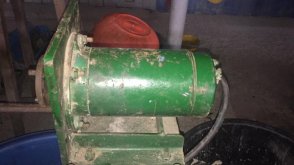
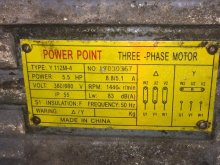
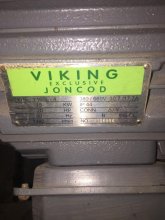
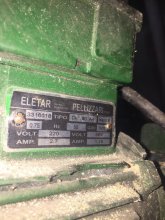
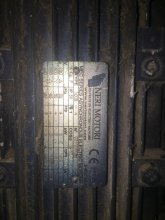
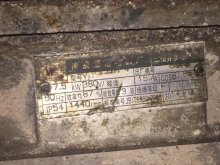
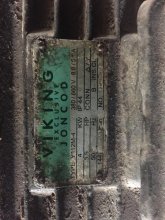
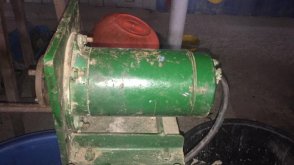
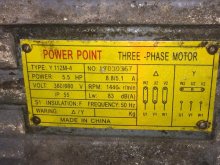
I was under the impression that 3 single phase inverters that are paralleled do not increase their output. IE 1 unit provides 15kw for the first third of the phase, it "hands off" to the second unit, which provides 15kw to the second part of "third", which hands off to the third unit for the last part of the phase.
IE 3 - 15kw single phase inverters, tied together provide 15kw of 3phase. not 45kw of 3phase.
No so enormous.I believe you can connect 6 Quattros to get 30k of 3 phase. This is an enormous system requiring an enormous battery and solar setup.
No so enormous.
I've got that much deployed in my yard right now (need to drag a few more panels out of the closet for sufficient production more than just middle of the day.)
I have enough battery to kick over the motor and keep running about 30 minutes.
thanks for your contribution, the highest load among the rest of the induction motor is 20hp, 15kw 380/660volt 30.7/17.7 surge currentSMA Sunny Island you can configure 3-phase, 17 kW continuous (at 25 degrees C), 33 kW surge current.
If it can start that largest motor, it will deliver full power but only if kept cool enough.
Running the motor with a VFD will of course make it soft-start. (But then we wonder why we can't just feed PV directly into the VFD, which of course is an inverter)
I don't know the starting current of 3-phase motors. They have a good phase-shift which helps; split-phase motors often use a capacitor, may provide much weaker starting torque.
What voltages do those motors use? 208Y? 408 delta?
No, I see 380/660 for most of them, one is 220/380. One looked different, not sure it included 380.
You'll need to select an appropriate transformer.
Oh, those Sunny Island power ratings were just coming from battery. You can attach 2x as much (34 kW) of AC coupled PV inverter, so up to 50 kW operating power and 67 kW surge in full sun. That would be peak; some power level could be depended upon during the work day except when cloudy.
SMA also has a way to link multiple groups of 3, "multi-cluster", but I'm not familiar with whether they can share loads. If so, there would be a limit based on their internal transfer relays; might provide up to 20 kW additional as a maximum.


It is not quite that simple.I was under the impression that 3 single phase inverters that are paralleled do not increase their output. IE 1 unit provides 15kw for the first third of the phase, it "hands off" to the second unit, which provides 15kw to the second part of "third", which hands off to the third unit for the last part of the phase.
IE 3 - 15kw single phase inverters, tied together provide 15kw of 3phase. not 45kw of 3phase.
A cursory examination of the 3 phase waveforms shows that when any phase is at max voltage, the other two phases are at 50% of max voltage. This indicates to me that the correct answer is that 3 phase power is capable of delivering double the max power of any single phase. Going to take calculus to prove this and I don't do calculus for anyone unless they are willing to give me money or a kiss.

Thanks for the analysis. My electric machines classes where back in the 80's and I haven't had much to do with 3 phase power since. Most of my practice is involved with signal processing and embedded systems.Into a real, linear load (i.e. a resistor), instantaneous power is V^2/R (goes to zero when voltage is zero)
If average power from a single phase is 15 kW, then average power delivered from three phases is 45 kW.
With those three phases each 120 degrees apart, instantaneous power at all times is also 45 kW. 3-phase delivers perfectly smooth power, no ripples.
That means current draw from a battery to deliver 3-phase has no ripple. A single 3-phase inverter would have no ripple on its capacitors. (in both cases I'm referring to 60 Hz ripple; the inverters have a higher operating frequency which would ripple.)
Yes, I did have to do the calculus. That was an exercise in school.
If one inverter delivers 15 kW, two inverters split-phase delivers 30 kW and three inverters 3-phase delivers 45 kW.
In the case of 120/208 you can connect 3 resistive loads each from one phase to neutral and each sees 120V. 3 resistive loads each across two phases and each sees 208V. Make them the right resistance for each case, and 45 kW delivered in each case.
Now, if you rectify single phase or 3 phase to put it on a capacitor (e.g. for a VFD that doesn't have power factor correction), then current draw does ripple. Zero current draw until a phase exceeds voltage on the capacitor.
But for motors, very smooth power and nice torque.


